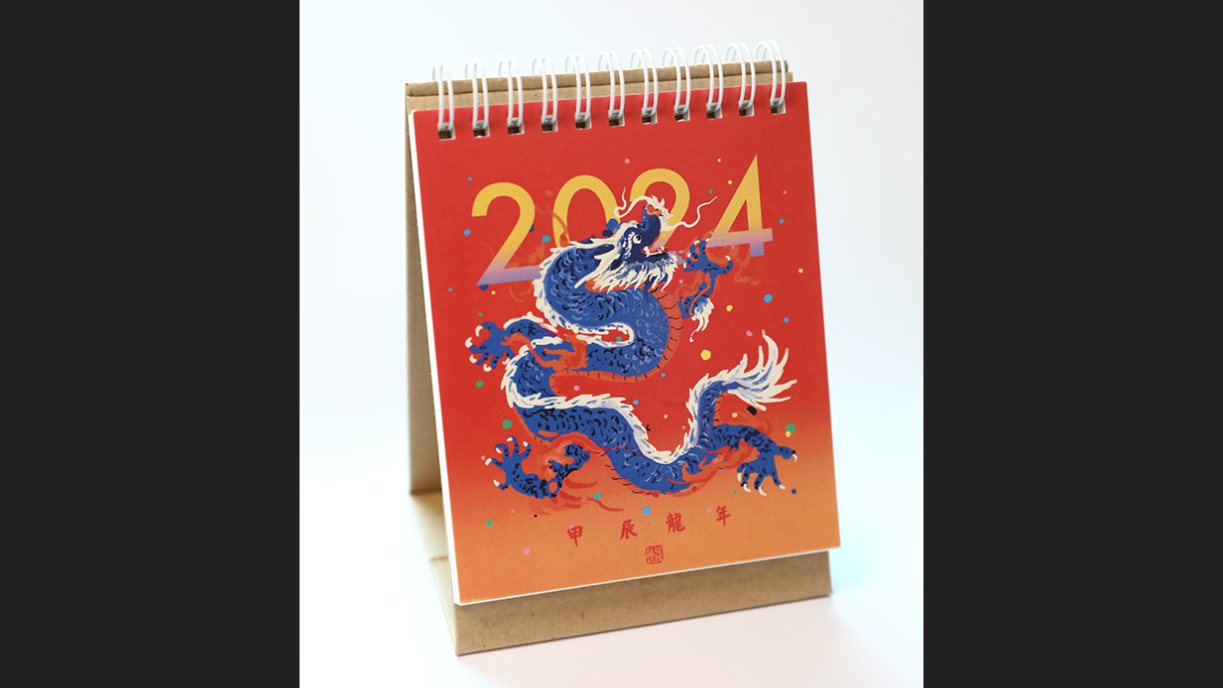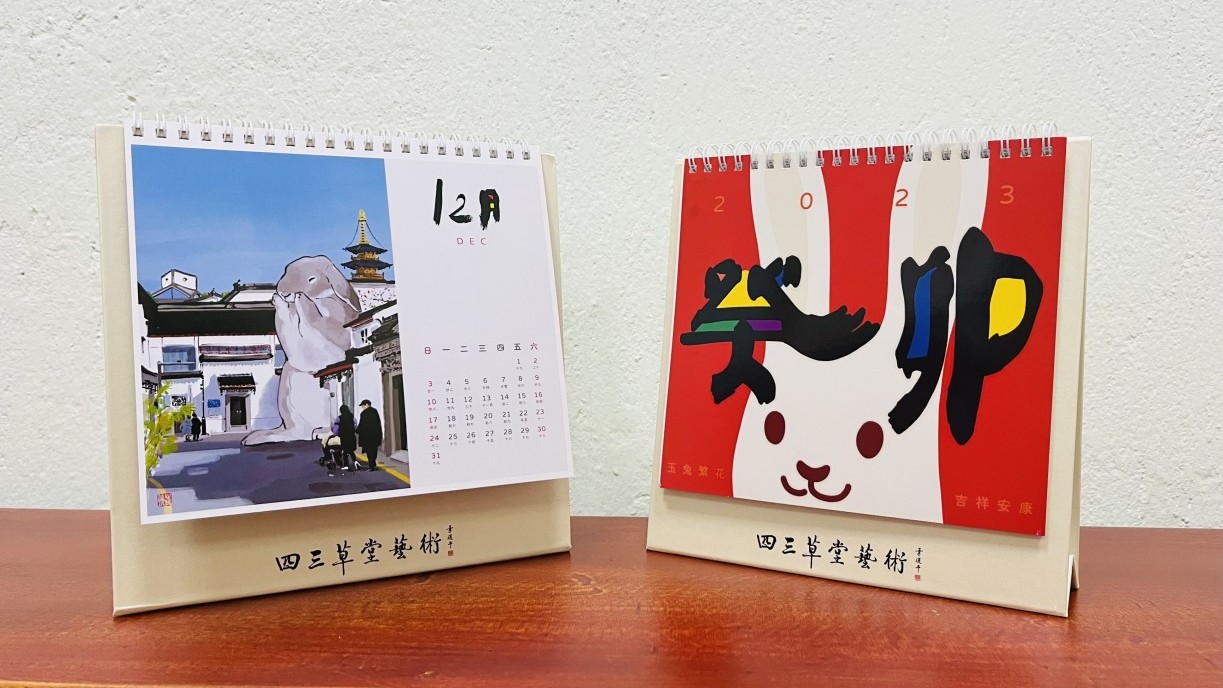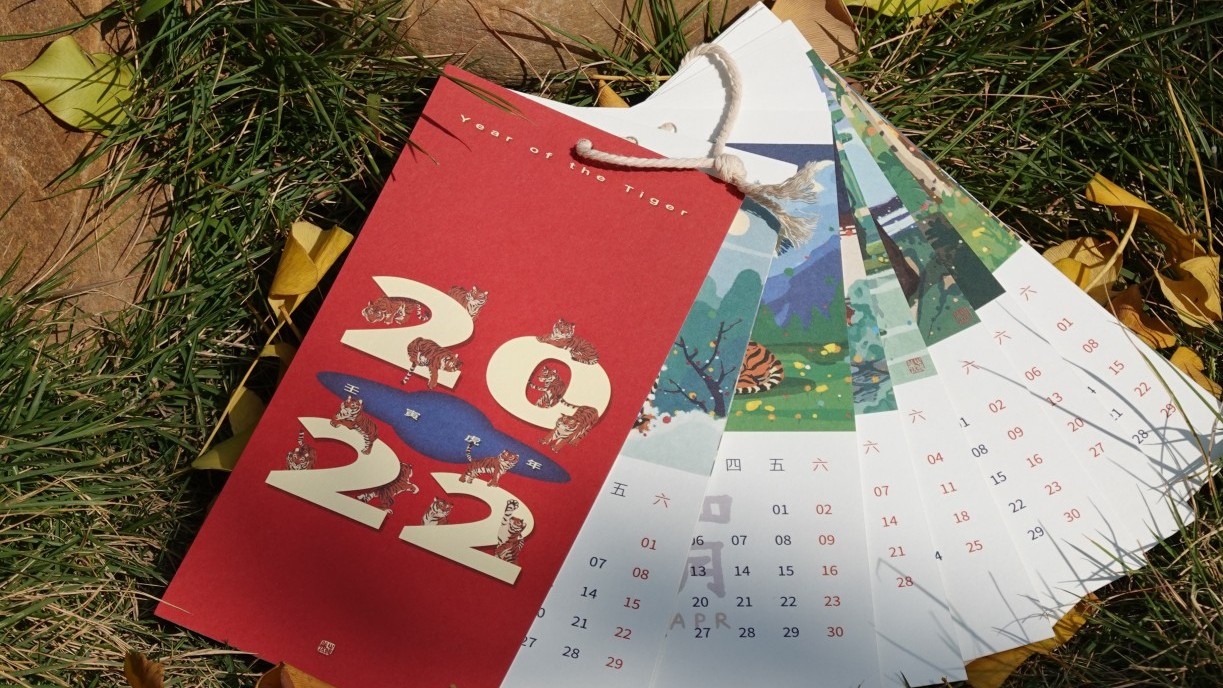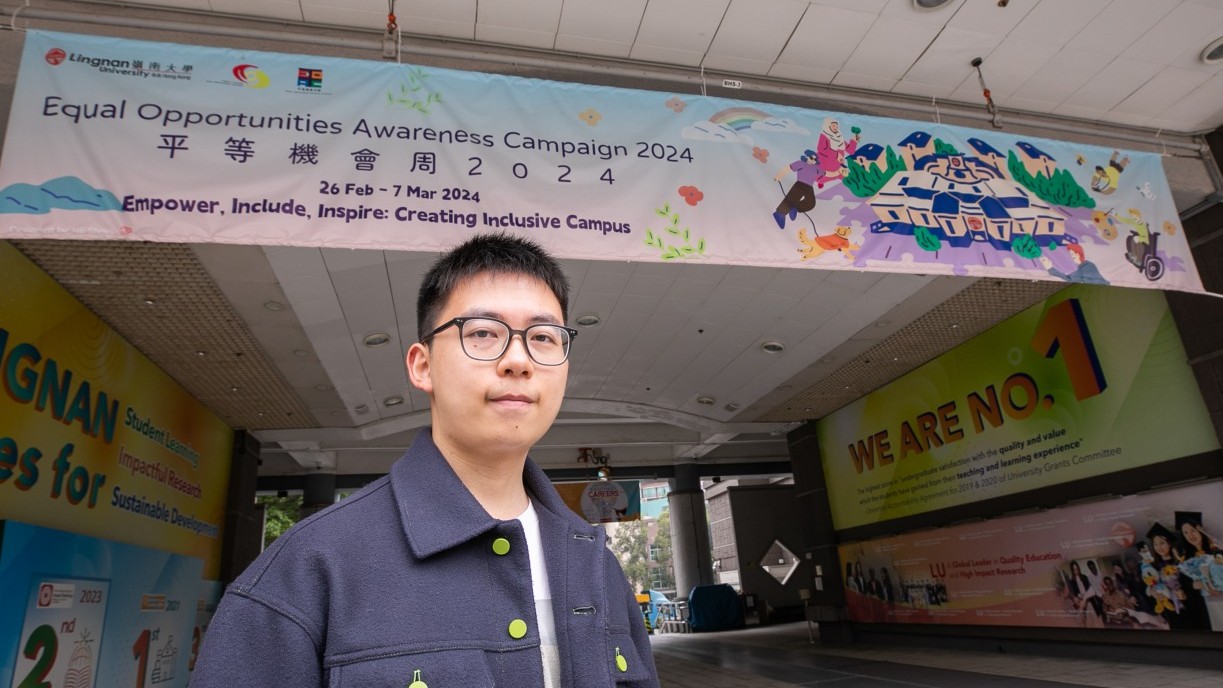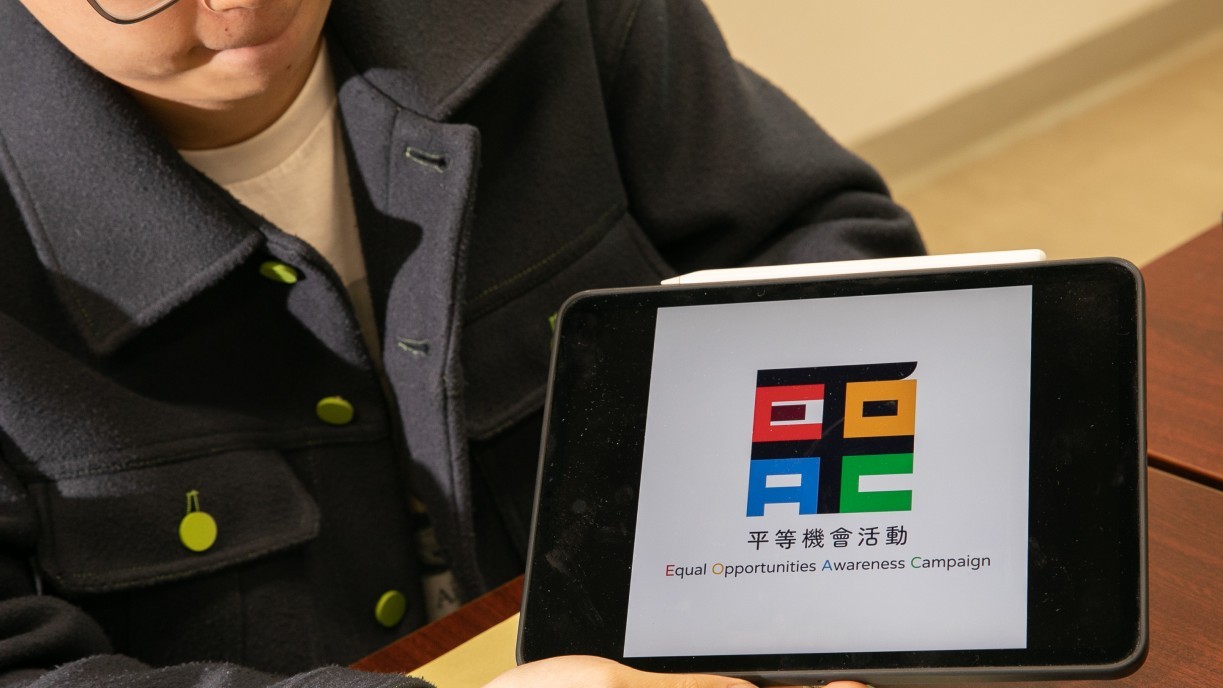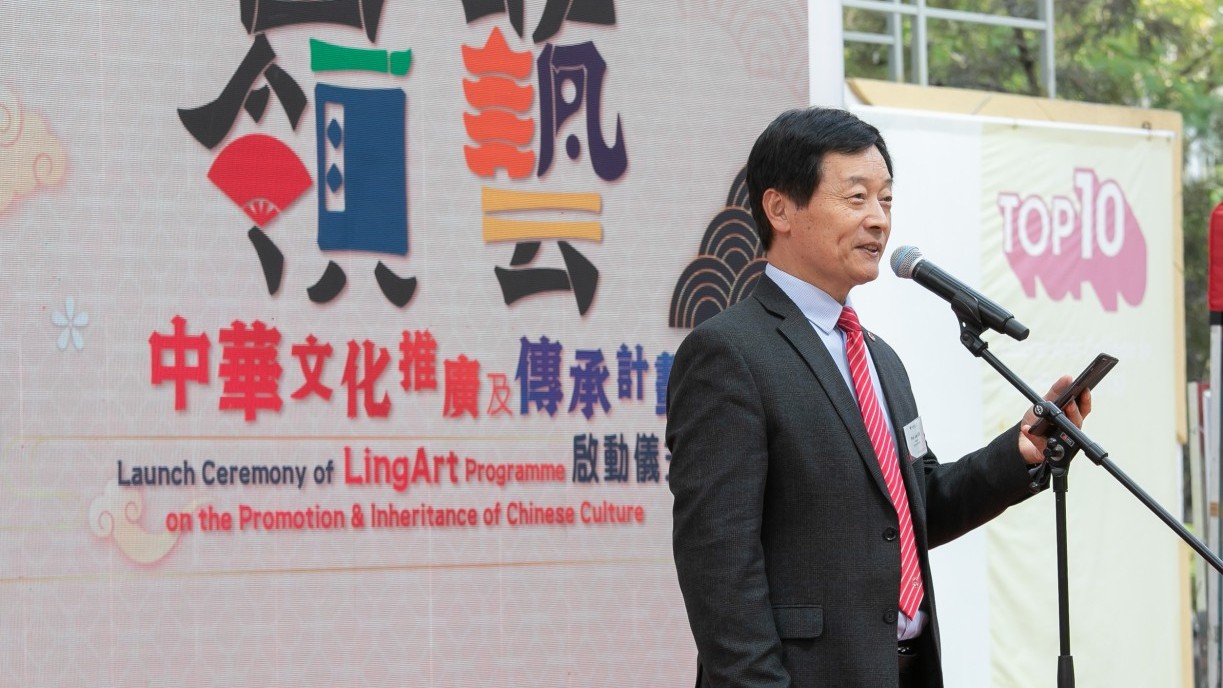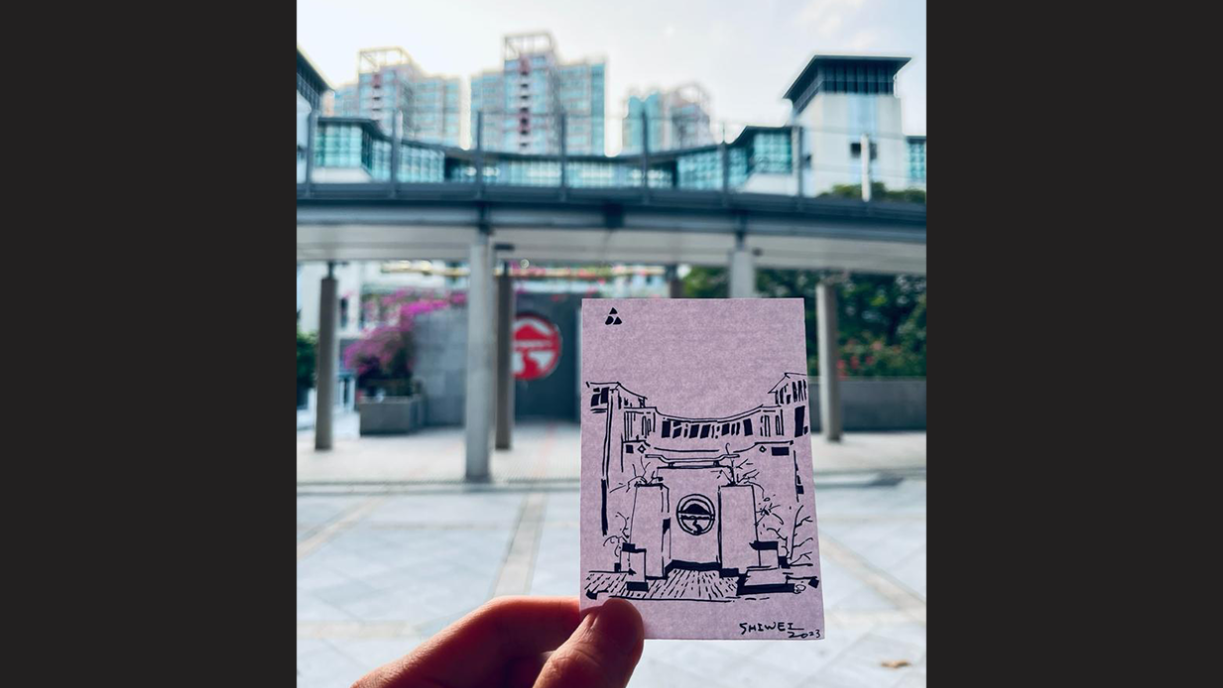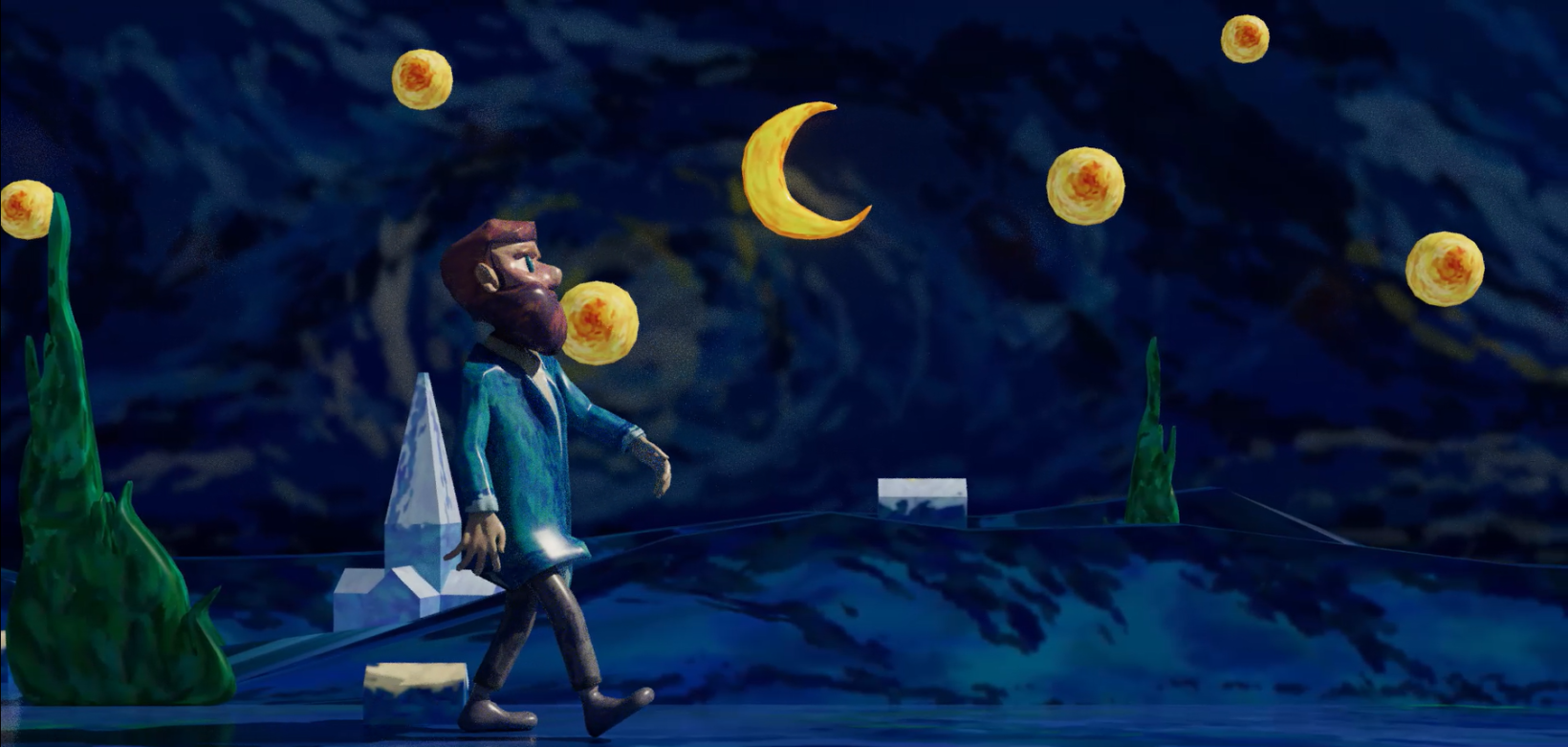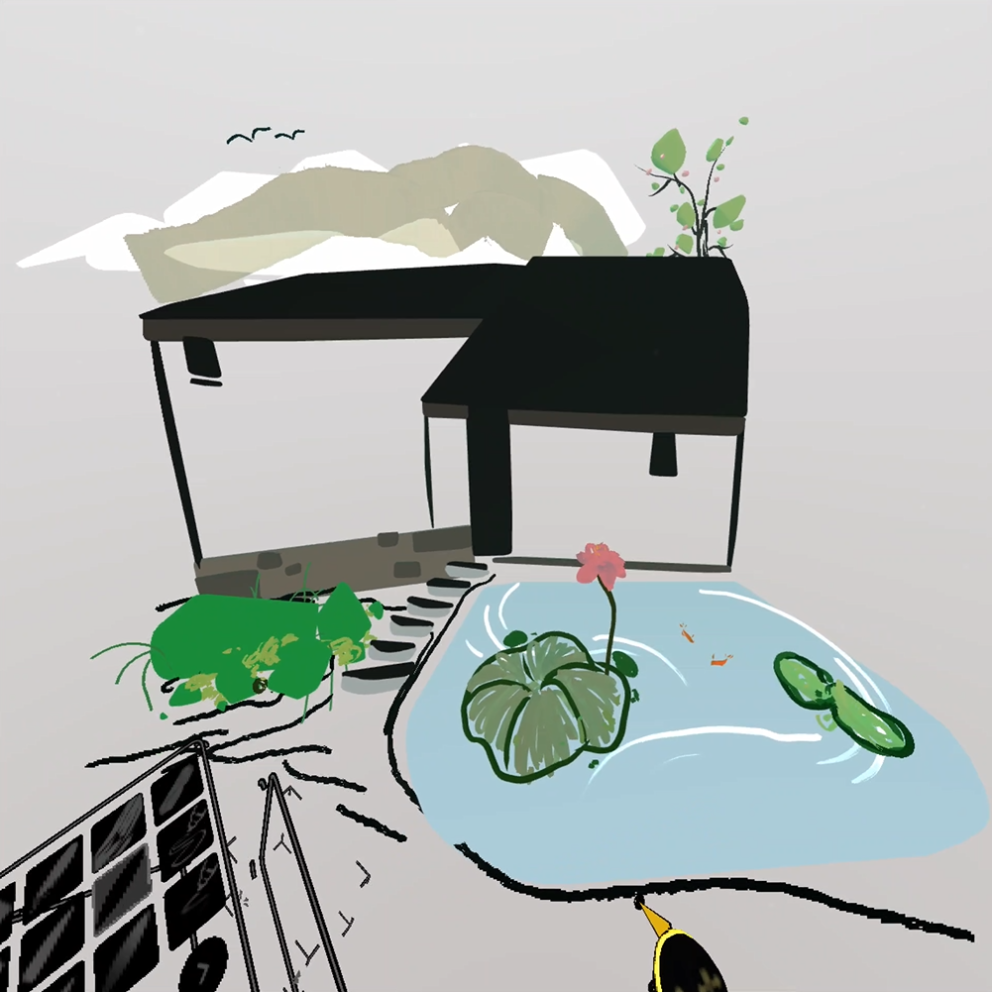Experimenting with art x technology: the cultural legacy of Lingnan’s new-gen calligrapher-painter
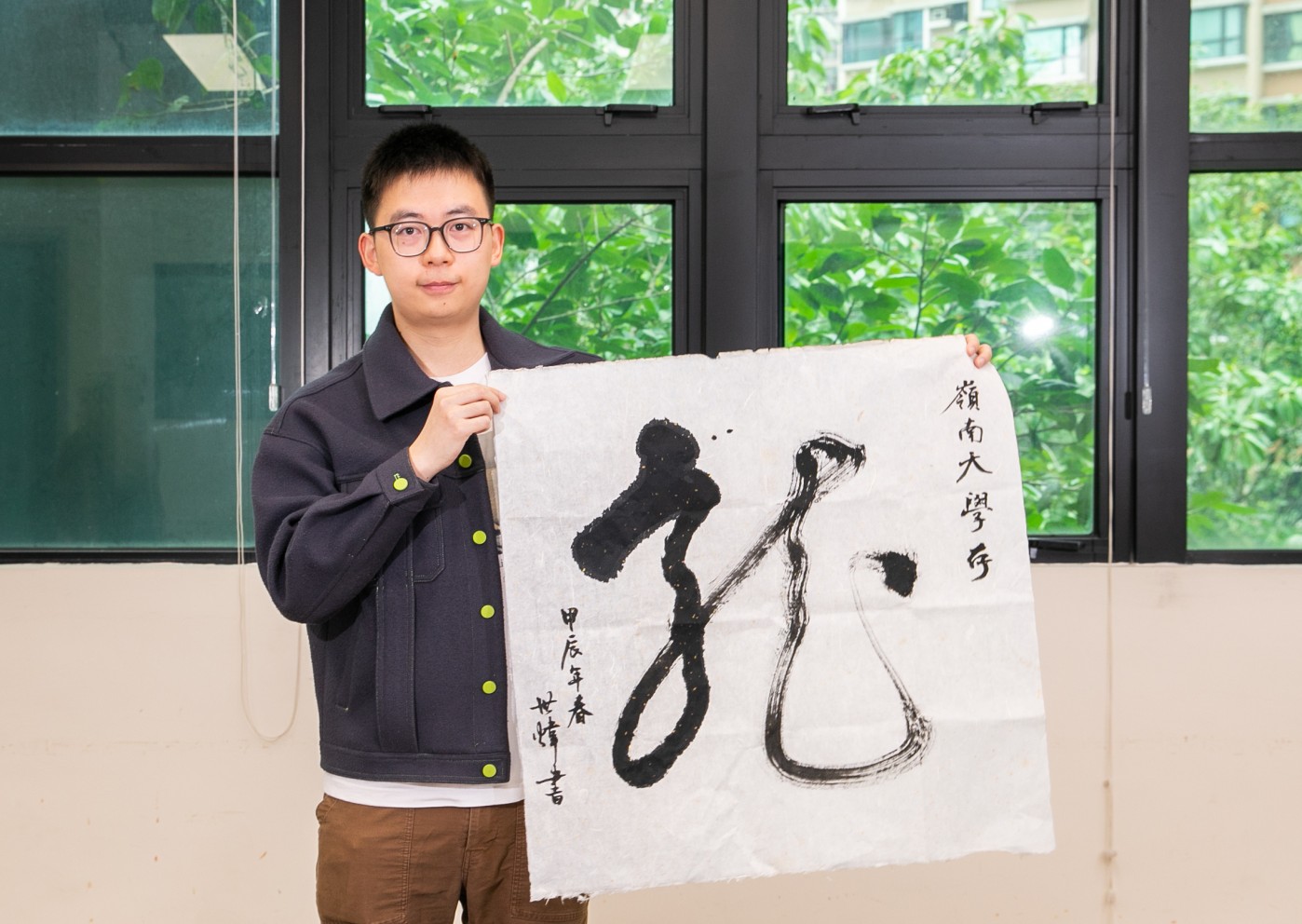
“I am very fond of Lingnan’s unique modern architectural style. Ever since I first set foot on campus, I have been fascinated by its perfect blend of perennial and contemporary designs.” For He Shiwei, one of Lingnan’s new generation of calligraphers and painters, Lingnan University is more than an academy: it is an embodiment of the integration of art and technology.
A few years ago, when he often watched talk shows, Shiwei was deeply impressed by Prof Xu Zidong, then Head of the Chinese Department of Lingnan University - so much so that he began to think of coming to the University. “At the time, I already found Lingnan to be an exemplary and honourable institution.”
Interested in calligraphy and painting, Shiwei applied for the visual studies programme at Lingnan, which offered him an interview. However, an unexpected “matchmaker” led him onto a different path in arts education. “While I was invited to interviews at other universities as well, my best impression was of Lingnan, and in particular of the kindest and most passionate interviewer I’ve ever met, Prof Emilie Yeh Yueh-yu, Dean of the Faculty of Arts. After looking at my portfolio, she recommended that I have a shot at a more practice-oriented programme, and study animation and digital arts.”
Hailing from a family of artists, Shiwei has always been influenced by the work of his father, Master He Baijun, a colour calligrapher (“caishu”), who was named Guangdong Arts and Crafts Master. At the age of four, he made his first brushstroke as a way to express emotion through ink. “The mood of the work varies according to the scripts adopted. Many people may think that calligraphy should be written in peaceful and quiet circumstances, whereas in fact calligraphy often reflects the calligrapher’s personality and mental state. The results may vary – sometimes joyful and unrestrained, sometimes melancholic and bitter.”
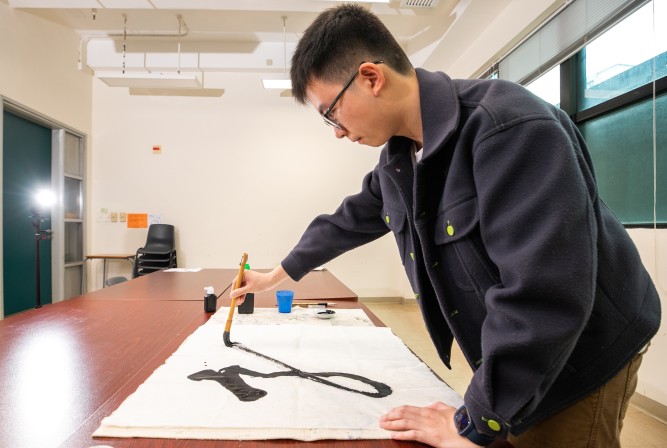
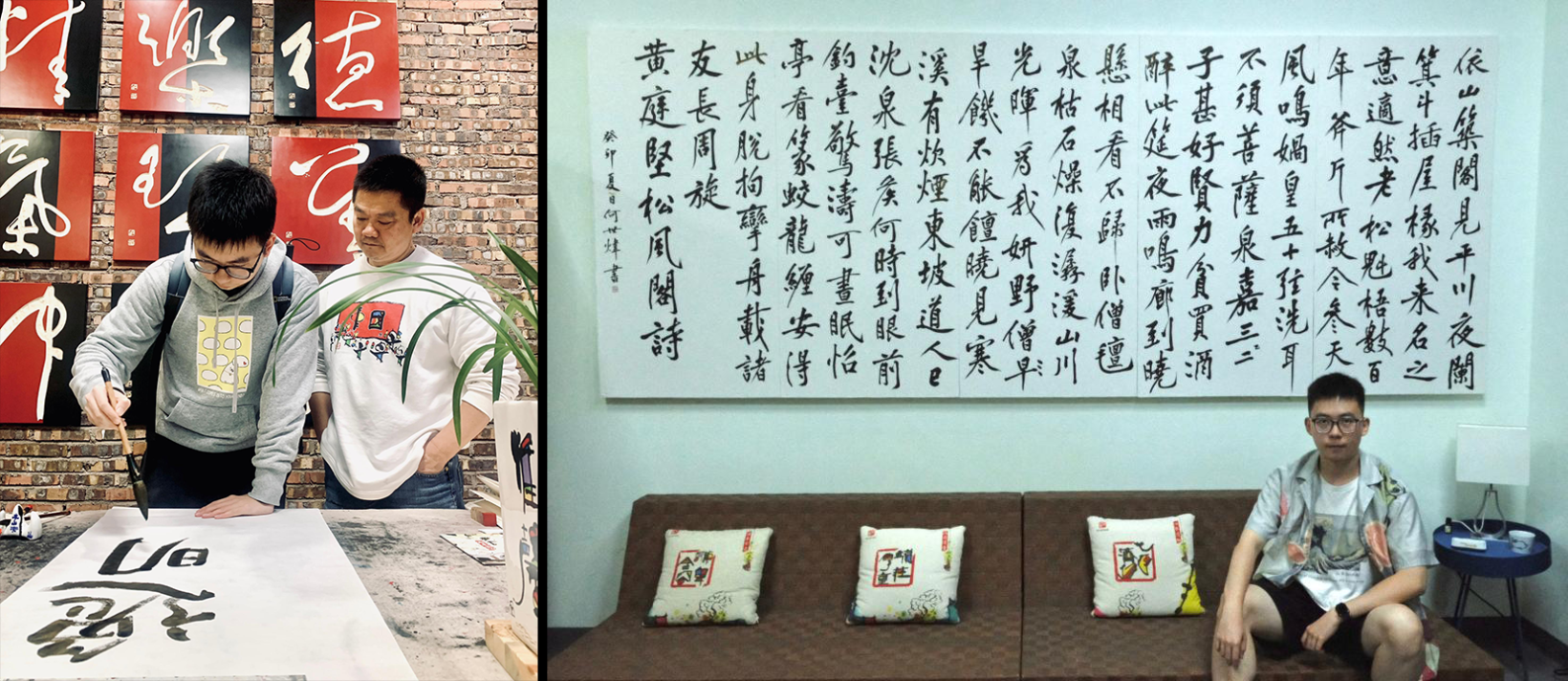
Under the guidance of his father, Master He Baijun, Shiwei copied Song Dynasty calligrapher Huang Tingjian’s “Poem on the Hall of Pines and Wind” in running script.
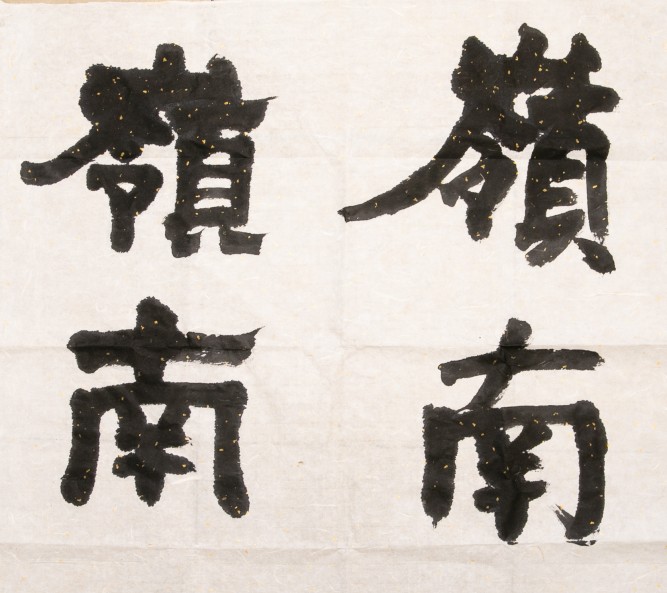
Shiwei has been practising different Chinese calligraphy styles since he was young, saying “The clerical script (left), written in a style like that of Qing Dynasty calligraphers, which can be traced back to the Qin Dynasty, after which it evolved during the Qing Dynasty. The regular script (right), shown here in a style like that of the Wei Stele, flourished in the Northern Wei Dynasty when it was used mainly for stele inscriptions. It later became the script on many storefront signs in twentieth-century Hong Kong.”
“At first, it was my grandfather, who was good at Chinese painting, who taught me by drawing the characters in Water Margin. I still remember, when I was in Primary 5 my grandfather would tell me to draw two portraits every day when I got home from school. This continued until I had finished all 108 characters. Sometimes I felt so bored I wanted to give up, but then he would stop me from falling by the wayside, and even urged me to repaint if I didn’t get it right. My grandfather’s emphasis on basic skills and his demands enabled me to lay a solid foundation in art. In contrast, my father encouraged me to express myself freely and create what I liked, allowing me to open up a plethora of artistic possibilities.”

Turning the pages of his childhood collection of reproductions, Shiwei reminisced about his grandfather telling him to never give up halfway, whether in art or in life.
It was precisely his grandfather’s insistence on painting dexterity and his father’s open-mindedness that compelled Shiwei to pursue innovation when he grew up, employing new media to continue the traditional craftsmanship of his grandfather and father, yet to innovate. “When I bought my first iPad, it gave me more creative space to attempt various styles.”
The Year of the Pig commemorates Shiwei’s first iPad-illustrated desktop calendar.

Playful and whimsical, Shiwei’s original illustrations transform little rabbits into prehistoric Jurassic World behemoths that wander across modern cities and landmarks at peace with nature and human beings. (From the 2023 Year of the Rabbit Calendar)
“I was mostly exposed to the Chinese culture when I was young, and later when I studied abroad, I began to pick up European and American art. This shaped my hybrid understanding of Chinese and modern art. When I was in primary school, I was more inclined to classical works, for example those by Leonardo da Vinci, the key figure of the Renaissance, and, later, traditional Chinese painters such as Qi Baishi and Feng Zikai. When I went to high school, I started to admire modern European artists like Van Gogh, Picasso, and Dali.”
Shiwei is currently most captivated by the work of modern Chinese painter Wu Guanzhong, who fuses Chinese and Western creative traditions while demonstrating a strong personal style. His artistic theories also opened Shiwei’s eyes. “Wu Guanzhong has close ties with Hong Kong. Not only do many of his works depict Hong Kong’s streetscapes, but he has also donated a lot of his masterpieces to the Hong Kong Museum of Art. In addition, his teacher Lin Fengmian, the founding principal of the China Academy of Art, was born in my home town of Meizhou, Guangdong. My father was inspired by Lin’s advocation of melding Chinese and Western art, which in turn set me on the path of integrating Chinese and Western art as well as the old and the new.”
One of Shiwei’s illustrations in his Year of the Dragon Calendar pays tribute to French painter Matisse’s famous 1910 “Dance”, showing the vivid movements of sacred Chinese dragons in bold, modern, fauvist colours.
For Shiwei, painting is a way to relax from studying. He is particularly grateful for the support of Prof Man Chi-wah, Acting Head of the Department of Digital Arts and Creative Industries and Programme Director of the BA in Animation and Digital Arts Programme, who has given him the golden opportunity to collaborate with different units of the university. “Take the promotional banner I designed earlier for Lingnan’s Equal Opportunities Awareness Campaign 2024 as an example. Since the theme is working together to build an inclusive campus, my idea was to employ elements of building blocks and jigsaw puzzles, and paint a picture of many university students collaborating to piece together the vision of an ideal campus.”
Besides, Shiwei also worked with the Office of Student Affairs to visualise the traditional Chinese cultural elements presented by Lingnan’s first two-year LingArt Programme on the Promotion and Inheritance of Chinese Culture through a creative logo in colour calligraphy, driving collaborative efforts in preserving the rich and diverse heritage of China.
In the ever-changing digital era, Shiwei never stops learning and he hopes to become an expert in Lingnan’s animation and digital arts programme and learn about the latest technologies in order to enrich his artistic forms and expressions.
“I have been trying out the VR facilities and 3D printers here. With the help of the software in the character design class last term, I created a three-dimensional animation which depicts Van Gogh walking under the stars. While the teacher provided the skeleton-based action model, it was I who designed the background and character, as well as putting everything together, resulting in a synchronised change in the background when the subject walks.”
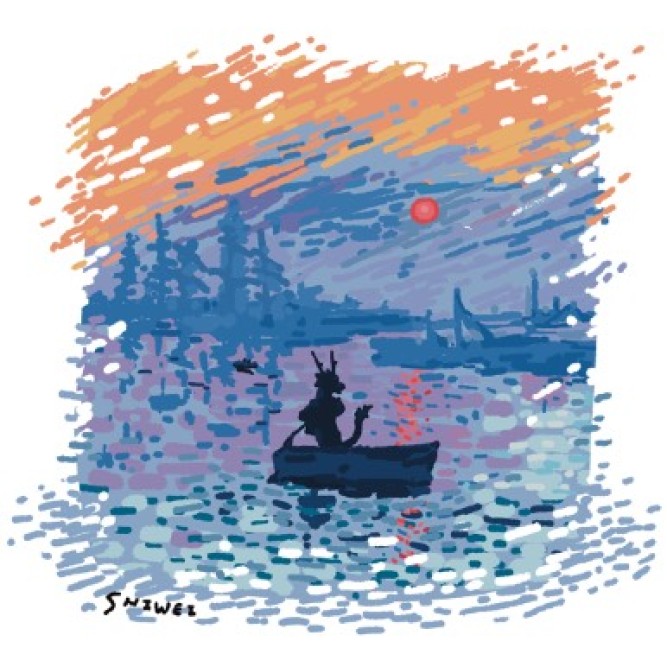
Shiwei combined his knowledge of humanities and art to portray a Chinese dragon – which Monet never saw – in the style of Monet’s “Impression, Sunrise”. (From the 2024 Year of the Dragon Calendar)
In the age of AI, all kinds of inventive images are merely a few text prompts and a click away – is this a blessing or a curse for art development? Shiwei thinks this is still open to question. “From my own experience, I have yet to gain inspiration from AI, but sometimes I play with it as a form of entertainment.
“While AI is capable of accurate imitations, it is hard to create anything new from it. For instance, AI is unable to create portraits or animals in the style of an artist who usually only paints landscapes.”
Speaking of the future, Shiwei hopes to inherit his father’s legacy and to work in art and design. “It’s not bad to be a university teacher either. The university provides a dynamic environment where I would always be surrounded by young people and stay active. I also hope I can share my joy in art with more people. I have always been rather introverted, and even as a child I rarely played with my classmates. It was only after coming to Lingnan that I gradually became more involved, and joined clubs and improved my communication skills.”
A third-year student, he is currently the Internal Vice-President of the first Digital Arts and Creative Industries Society “ADAptable” in the Association of Arts Programme, Lingnan University Students’ Union. Mainly responsible for designing promotional materials, Shiwei plans to organise art workshops in the future.
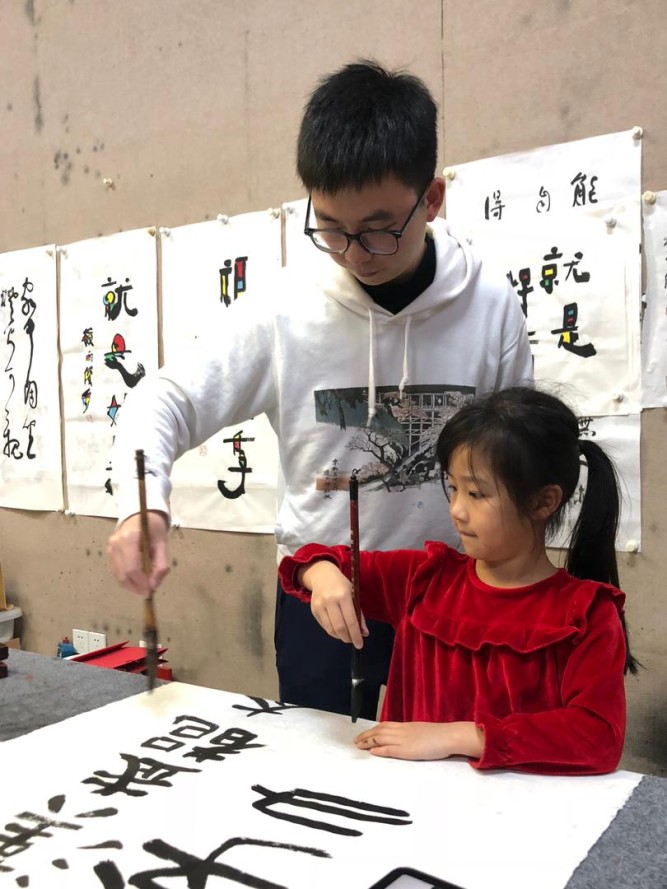
Shiwei returns to his studio in Shenzhen on weekends to teach children calligraphy and painting, the way his father used to teach him as a child.
“I think calligraphy and painting have a lot in common. They are both ways to cultivate people’s artistic appreciation and, ultimately, improve the public’s aesthetic intelligence. Teaching calligraphy is the same as teaching painting – it is about learning how to enjoy art.”
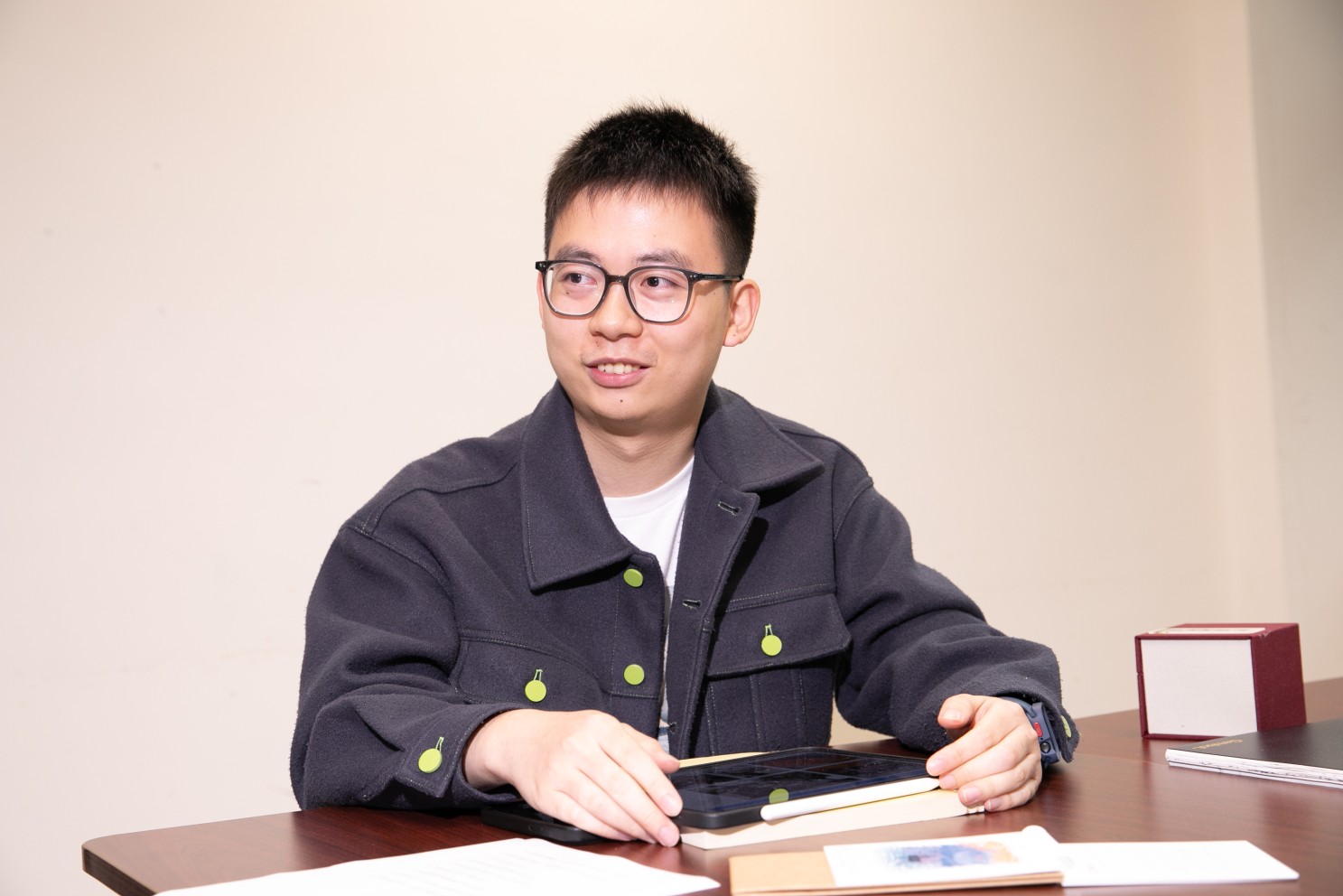
Shiwei believes that in the digital age, a humanistic approach in inspiration and creation is more valuable than the end result.
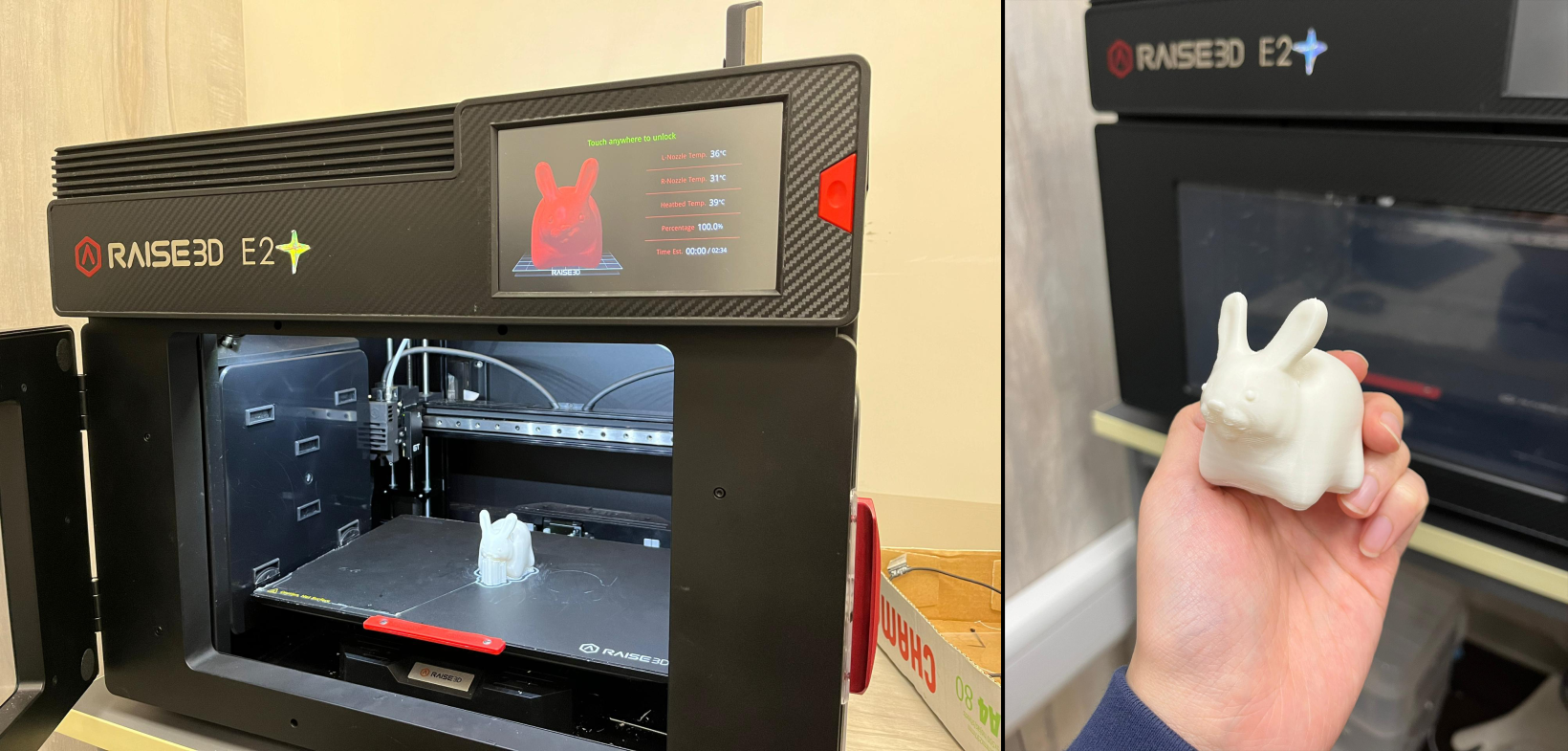
Lingnan University provides 3D printing equipment to animation and digital arts students, allowing young art-loving creators like Shiwei to “paint” a new world.


